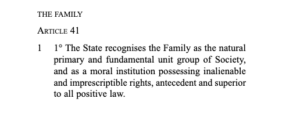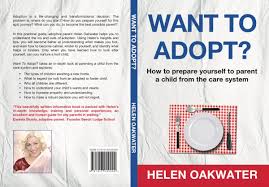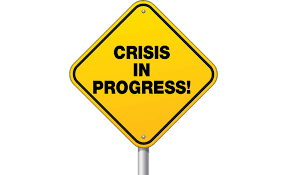But have you stood the test of time?
“Is the Act fit for purpose? Overwhelmingly yes. Able to use its basic structure to allow us to embrace changing concepts in society. Where it is failing is not where its ethos is flawed but because its ethos required it to be funded – to deliver services to families and communities. “
The Children Act is now 30 years old. For many family lawyers, its the only law we have ever known. Both the Act and I were young back in the distant days of 1993 when I graduated from University and went on to Bar School; becoming a fully fledged family lawyer in about 1998. We are both very much older now and the world is very different in very many ways – perhaps most notably in how notions of family and sexuality have shifted.
Over the years I have heard a variety of criticisms of the Act. The French documentary ‘England’s Stolen Children’ had an unusual take in 2016, that it was the creation of Margaret Thatcher to ‘liberate’ the working classes and it gives children’s services the power to remove children on a mere suspicion of maltreatment, present or future. This is of course not true. For further discussion about the risk of future harm, see this post from the Child Protection Resource from a retired social worker.
However, rather more compelling criticisms have been raised over the years. Professor Devine comments that the clear lines drawn in the Act have become dangerously blurred between offering help and support with the consent of the parent/imposing coercive measures to ‘rescue’ children. Professor Featherstone remarks upon the ‘risk monster’ that the Children Act now appears to have facilitated. More and more children are being investigated, care proceedings are rising and yet levels of child abuse are not falling. There is also evidence of a worrying geographical disparity between levels of intervention.
Patrick Philps, a retired social worker, wrote a guest post for this blog calling the Children Act a ‘deeply flawed piece of legislation’ – his primary concern being that the Act contained a nebulous definition of what was meant by significant harm and children were being removed from their families when they should not have been. He commented:
I am not suggesting that children should never be removed, and I see the ever swinging pendulum in the process of swinging away from child removal again. However, in my view the 1989 Children Act is pie in the sky and needs to be replaced with legal standards which more nearly reflect those expressed in re B-S, that is to set realistically measurable standards to govern the protection of children, rather than to push the law into ever less measurable levels of ‘abuse’ as Robert Buckland, QC, MP, Solicitor General curiously seems to advocate (The Times, 15 January 2015). Any reliable system also needs to recognise the impossibility of predicting abuse, a lesson one may draw from Eileen Munro’s early works in which she draws attention to the mathematics of risk assessment, false positives and negatives etc, but which she proceeds to ignore in her own advocacy of its use in social work (reference needed). The mathematics of ‘false positive’ identification would indicate even higher levels of mistaken removal than some of the conspiracy theorists in the field would have us believe, but not in the least due to ‘conspiracy’.
So I was interested to know what would be Professor Jo Delahunty QC’s take on the Children Act in her Gresham College lecture on 31st January 2019. Sadly, dire warnings of Snowmaggedon prevented my actual attendance but I was poised and ready by the YouTube Live link.
If I make any comments of my own on the analysis offered by Professor Delahunty, they will be in italics
The 30th Anniversary of the Children Act 1989 – is it still fit for purpose?
The Children Act 1989 embodied a change in philosophy by making the child’s welfare the courts ‘paramount’ concern, moving away from the concept of parental rights towards the right of the child. It embraced the idea of shared parental rights and responsibilities and that children are best cared for within their families but not at the expense of suffering avoidable significant harm. Has the Act done right by children since 1989? Has it adapted to the challenges of childhood and society?
The Children Act has seen 6 Prime Ministers and 6 Presidents of the Family Division come and go. Before it was born practitioners had to deal with five different Acts spanning 1933 – 1969 in a system geared very much to ‘juvenile delinquents’ so hearings were conducted in atmosphere of ‘crime and guilt’ rather than help and support. The pressure for reform mounted in the late 1980s with a number of high profile and shocking child deaths. The core concept of the Children Act was supposed to be working in partnership; offering families support.
But society has changed dramatically in the last 30 years; it has become ‘freer and more diverse’. Has the Children Act stood the test of time?
Professor Delahunty admired the drafting of section 31 setting out the threshold criteria. When she is sitting as a Judge, the various components of section 31 has shown it can adapt to society’s changing needs; it is ‘fluid’ and ‘positively directs your attention to the child’s needs’. This is the counter to the criticism of Patrick Philips above – that fluidity is needed in order for the Act to encompass and deal with the almost infinite array of sadness and difficulties that families can face. But questions about lack of clarity of definition remain troubling and probably have been exacerbated by lack of training and funding – which Professor Delanhunty discusses further on.
Of all the components to the Act, what is most important to her is that the child is at the centre. Pre 1989 you had custody and access orders; historically the father had all rights over the child and the mother none, unless born out of marriage. The hangover of those ideas carried through to 1989 and they were pernicious. ‘Custody’ gives a strong connotation of possession and control. It is a process or arrangement that happens to people. Also ‘access’ has strong physical connotations. It says ‘possession’ and that is exactly what a child should NOT be. Thus the Children Act 1989 made them words of the past and introduced important concept of ‘parental responsibility’.
However and sadly she notes that the new words of ‘residence’ and ‘contact’ introduced by the Children Act quickly hardened into words that parents used to denote who was the ‘winner’ and who the ‘loser’ in any dispute about seeing children – so we now have the opaque and cumbersome ‘child arrangements orders’. However, I strongly suspect the problem here will never be cured by tinkering with the names attached to various forms of orders; it goes much deeper and reveals the emotional difficulties many parents feel in navigating disputes about their children.
An example of how the Act could adapt and apply was shown in the decision of re M involving a transgender mother who was initially denied contact with her children because of the adverse reactions of the religious community in which her children still lived. The Court of Appeal held that the court had to consider the ‘reasonable parent’ as someone receptive to change, broadminded and tolerant. A symbol of parenthood we should all aspire to. The judge had failed to address head on the human rights issues – even secluded religious communities are not exempt from the laws of the land. This was not a set of circumstances that those drafting the Act in 1989 could have reasonably contemplated, but the court was able to respond fairly using the existing framework of the Act.
Radicalisation cases however did NOT easily fit the framework of the Children Act. Children were often making choices and keeping them secret from their parents who therefore could not easily be held to be culpable for the risk of harm a child faced. Therefore the courts revived the use of wardship for these children. The CA was designed to make wardship redundant but we now see its resurgence. This doesn’t mean the CA has failed; once crisis passed the cases often reverted to the CA jurisdiction. This shows the need for different areas of the law to act in partnership to meet children’s needs.
Have we now got the balance right? No. Children are still dying. Herefordshire v AB 2018 ‘rocked our understanding of section 20’. But what these examples of failures have in common is that they were matters that should have received the oversight of the court and did not. Professor Delahunty identifies not a failure of the legislation but a failure of implementation – and this stems from lack of resources. There is lack of training for social workers, lack of resources for the child, lack of legally aided lawyers, lack of judges to hear cases. She discussed a number of high profile cases when it was only significant press interest that appeared to prompt identification of support for a child.
Professor Delanhunty concluded with the question: Is the Act fit for purpose? Her answer was:
Overwhelmingly yes. Able to use its basic structure to allow us to embrace changing concepts in society. Where it is failing is not where its ethos is flawed but because its ethos required it to be funded – to deliver services to families and communities.
She ended with a warning – we cannot continue as we are for much longer. The system is under incredible strain, there are simply not enough judges to go round and we are in danger of paying lip service to the need to listen to the voice of the child. I can only hope as we slide further into Brexit madness that there will be some time and space for our politicians in the very near future to hear and act upon this warning.
I won’t hold my breath. I agree that the Children Act is still fit for purpose – but that our political system increasingly is not.
EDIT February 4th 2019
Professor Delanunty kindly sent me the notes of her talk and an additional quote from our now President which she wanted to include but ran out of space.
Per Sir Andrew McFarlane in a speech to the ALC in November 2018
“”Crisis” may be an overused word and some, outside the court system, may have questioned its deployment by Sir James Munby two years ago in relation to the rise of the number of care applications being received by the courts. For my part, I consider that Sir James was fully justified in calling this a crisis and, as the continuing figures have borne out since, Sir James was plainly right to blow the whistle when he did.”
“It was integral to the ethos of the Children Act 1989 that family life should be independent and free from unjustified interference by the state. That ethos was encapsulated in the central concept of “parental responsibility”, which was reinforced by the presumption that a court order modifying or restricting the exercise of parental responsibility would not be made unless to do so would promote the child’s welfare. That statutory foundation was further underpinned by the Human Rights Act 1998. Part Three of the CA 1989 set out general and specific duties imposed upon local authorities in respect to the services that they must, or may, provide to children and families. In the context of Part Three working in partnership with those holding parental responsibility and members of the wider family was a guiding principle in the effective discharge of a local authority’s duties. The principle of work in partnership was introduced and supported by the body of government guidance issued when the Act came into force […]
To my mind the category of cases that are now coming before the court in greater numbers than was seen hitherto must, almost by definition, come from the opposite end of the spectrum of harm. They are likely to be cases of poor parenting and neglect and in such cases there is a need for the courts to be astute as to the requirements of the threshold criteria. There may be a danger of the system slipping into the exercise of a broad benevolent discretion with courts accepting the need to help children who are generally in need, rather than strictly questioning whether the state of affairs for the particular child has indeed reached the level, which the architects of the Children Act clearly considered was required, sufficient to justify statutory orders.”
“It may properly be said that we have reached a stage where the threshold for obtaining a public law order is noticeably low, whereas, no doubt as a result of the current financial climate, the threshold for a family being able to access specialist support services in the community is conversely, very high.”
Professor Delahunty comments:
The lack of financial support for community resources < the rise in s 31’s > they are linked. Hence the value in reminding the audience of how the act was meant to cover community as well as court procedures with access to services, advice and support being embraced within its composite parts . However with limited legal aid for pre proceedings advice for parents , S 20 abuses , legal aid deserts for early ( any!) advice in private law , court staff / judges acting as advisors and counsellors< lack of court time as we have judges working to break point : all these deficits are crippling. Community lack of access to services and legal advice compounds an overwhelmed and overwhelming social care environment staffed by disrespected social workers , often unsupported , and inadequate managerial oversight with little joined up thinking with legal departments. I think every strand is intertwined.
Hence why I thought a reminder of what we should strive at might be timely.













